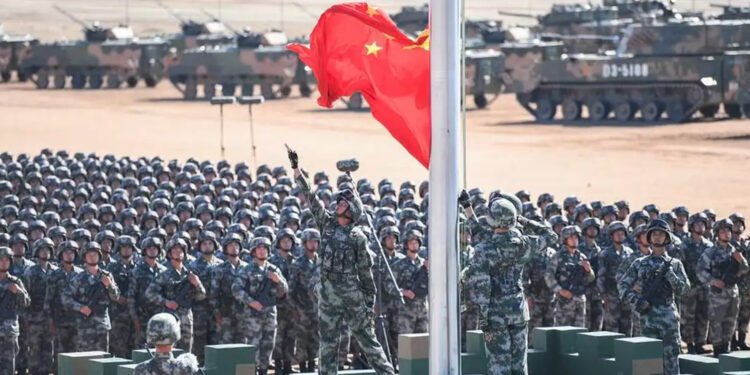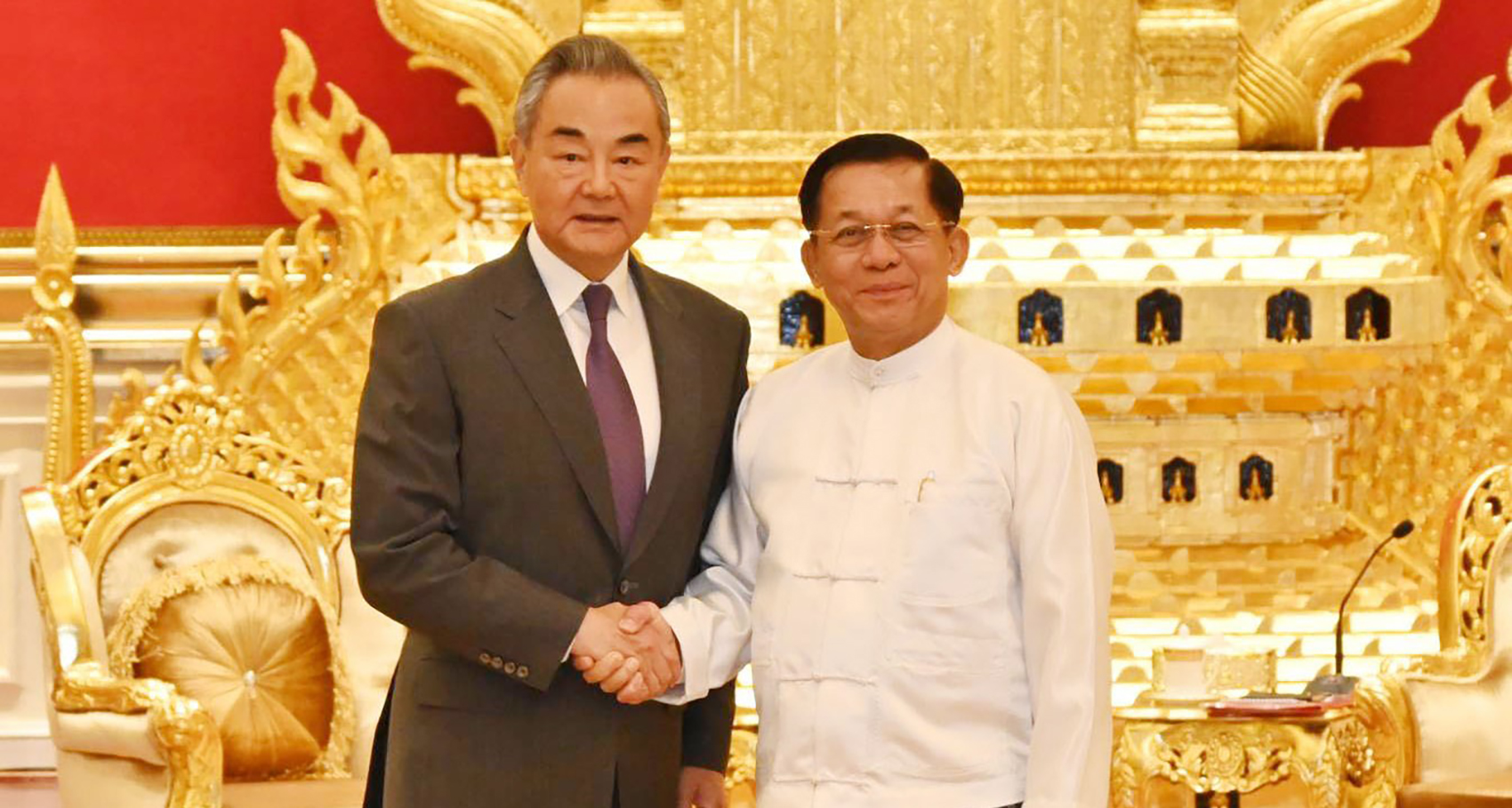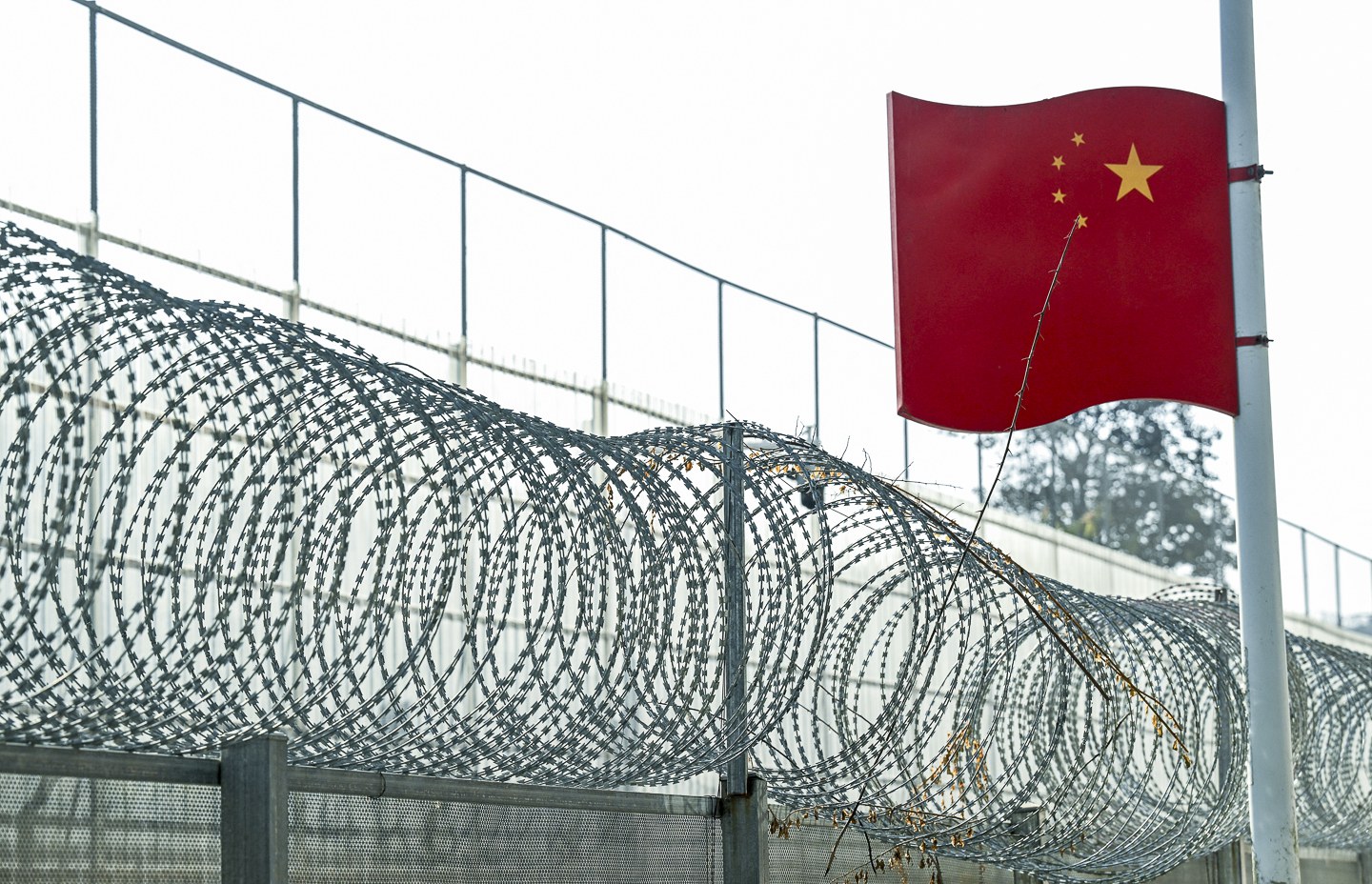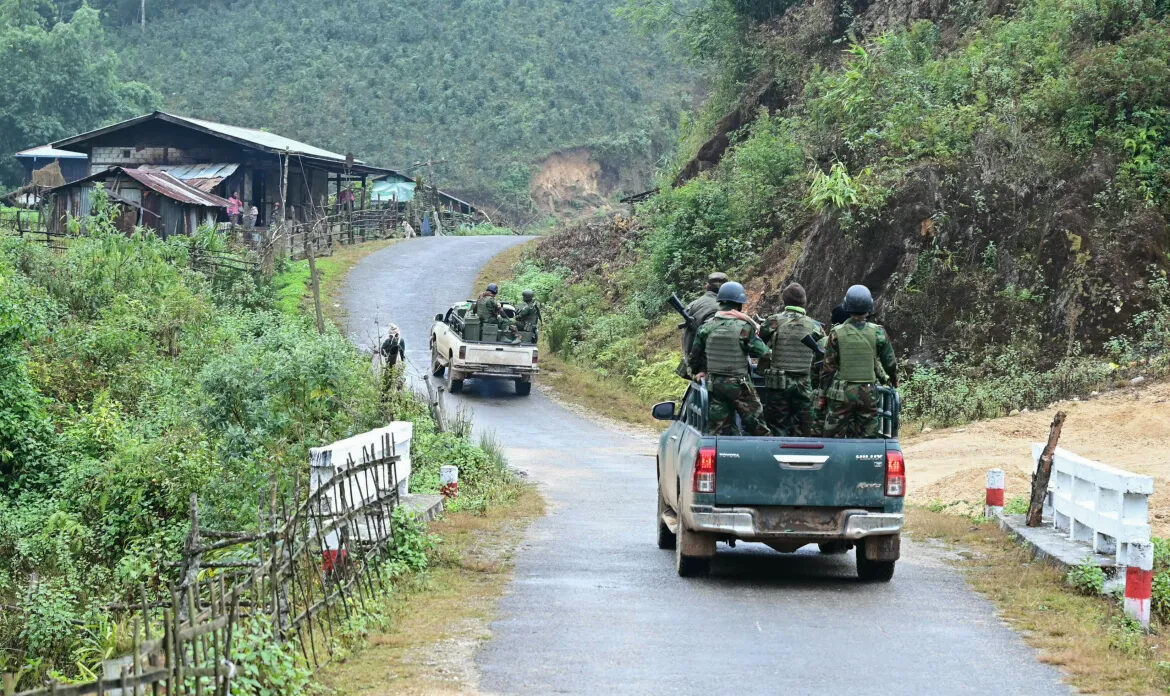
Chinese Foreign Minister Wang Yi’s visit to Naypyitaw on August 14 ushered in a new push by Beijing to resolve Myanmar’s crisis, though one still driven by self-interest.
By Thet Htar Maung
China’s stance
Wang told junta boss Min Aung Hlaing that China remained steadfast in supporting his regime’s five-point roadmap “to achieve political reconciliation, restore the democratic transition process as soon as possible, and find a path to long-term peace and stability.”
Beijing also opposed chaos and conflict in Myanmar, external interference in its domestic affairs, and any attempts to sow discord in China-Myanmar relations or smear China.
Two days later, on the sidelines of the Mekong-Lancang Cooperation Foreign Ministers’ Meeting in Chiang Mai, Wang told his counterparts from Laos, Myanmar and Thailand that China had three bottom lines: “Myanmar should not be subject to civil strife, should not be detached from the ASEAN (Association of Southeast Asian Nations) family, and should not be allowed to be infiltrated and interfered with by external forces.”
On Aug. 20, he met with UN special envoy for Myanmar Julie Bishop in Beijing and affirmed China’s commitment to a “Myanmar-owned, Myanmar-led” peace process.
Wang also touched upon Myanmar when he held talks with US National Security Advisor Jake Sullivan in Beijing on August 27-28.
Wang’s flurry of meetings in August signal a clear objective: China was conveying its stance on Myanmar to the international community and seeking their support.

Military drills on border
On Aug. 20, the Southern Command of the People’s Liberation Army (PLA) announced the successful conclusion of live-fire drills on China’s border with Myanmar.
The drills took place in four locations, including close to the key border trade hub of Muse in northern Shan State. Except for Muse, Myanmar’s 1,300-mile-long border with China is now under the control of ethnic armies. The Myanmar National Democratic Alliance Army (MNDAA) and Ta’ang National Liberation Army (TNLA) have so far spared Muse because of its proximity to China.
Beijing likely ordered the drills in a show of military strength directed at the MNDAA and TNLA, as well as the United Wa State Amy (UWSA), which is believed to be backing the two groups.
China has also restricted the flow of goods to the ethnic armies following their resumption of Operation 1027 in late June. It closed its border with the MNDAA and TNLA, cutting off supplies of food, fuel, medicines, and communications. In tandem with the military drills, it also shut the Namtit crossing in UWSA-controlled territory, which borders the MNDAA-held Kokang region.
On Aug. 27 China’s special envoy to Myanmar Deng Xijun held talks with Bao Ai Kham, the son of UWSA commander-in-chief Bao Youxiang, and UWSA vice chair Zhao Guoan at a Chinese border town.
The following day, Deng met with Kachin Independence Army (KIA) vice-chairman General Gam Shawng in Tengchong, Yunnan Province.
The Chinese envoy reportedly warned the UWSA not to supply weapons and ammunition to the TNLA and other anti-regime groups. He also told the KIA to stop fighting and engage in peace talks with the regime.
A Chinese group based in the border town of Ruili and directly controlled by Beijing reportedly joined the talks with the KIA’s vice-chair. Two days later, a warning allegedly issued by the Ruili National Security Commission to the TNLA began circulating widely on social media.
It warned of “more deterrent and disciplinary actions” unless the TNLA immediately stopped fighting and cooperated with China in maintaining peace and stability in northern Shan State and along the China-Myanmar border.
The Chinese Embassy ignored inquiries from news agencies about the warning’s authenticity, posting instead the Chinese Foreign Ministry’s response that, “China will continue to play a constructive role for Myanmar’s peace and reconciliation process and promote the de-escalation in northern Myanmar.” The embassy did not confirm whether China had issued the warning against the TNLA.
However, sources on the border confirmed that China does have a policy “to teach the TNLA a lesson” if it fails to stop fighting. The TNLA also confirmed that it had received the warning.
It seems Beijing decided to issue the controversial warning as a public announcement of the outcome of its talks with the ethnic armies.
China used a similar warning of “deterrent and disciplinary action” for its invasion of Vietnam in 1979. In repeating that threat, Beijing warned the TNLA that its troops were deployed at the border and ready to take military action if the ethnic armed group refused to listen.
The new warning came after China forced the TNLA and MNDAA to sign a ceasefire with the junta in mid-January by threatening to cut off their supply of food, fuel and medicines. After the border closure failed to achieve the desired result, China appears to be threatening military action.

Policy shaped by self-interest
China’s recent statements do not necessarily signal a preference for dialogue over armed conflict, however.
Beijing is well aware of the lousy leadership Min Aung Hlaing and his cohorts have demonstrated over the past three years. It is also aware that Myanmar’s military has lost its combat capability and is crumbling.
But China’s primary worry is the damage to its investments should Myanmar descend into complete chaos with the military’s disintegration. To be precise, it is concerned that hundreds of thousands of jobs in businesses run with fuel supplied by China-Myanmar oil and gas pipelines would be threatened.
Thus, China has chosen to focus on rescuing the failing regime purely out of self-interest.
In January, when the junta’s Northeastern Command in Lashio, northern Shan State, was under siege, Beijing came to the rescue by forcing the MNDAA and TNLA to sign a truce. Its latest intervention was triggered by the ethnic armies’ advance on Myanmar’s second-largest city, Mandalay, and Pyin Oo Lwin, which houses the junta’s military academies.

Bottom line drawn by Myanmar’s people
China’s three bottom lines on the crisis ignore the single bottom line adopted by Myanmar’s populace.
This bottom line has been drawn by the blood of peaceful anti-coup protesters shot dead on the streets, dissidents tortured to death in interrogation centers and prisons, resistance fighters who have sacrificed their lives on battlefields, and civilians massacred or killed in targeted regime attacks.
The line is also drawn by thousands of junta opponents behind bars, thousands who have lost limbs in fighting, countless residents whose houses have been torched, bombed or occupied, and millions of civilians displaced by the fighting.
It is a line that separates a regime that has committed every war crime in the book from the populace who oppose dictatorship. China must recognize that it should not recklessly cross a line drawn with the blood and suffering of Myanmar’s people.
China is opposing the will of Myanmar’s people by cutting supplies to the TNLA, one of the revolutionary groups bravely fighting the regime, and threatening military action against it.
The choice of words in its warning reflects its haughtiness.
If China crosses the only line drawn by Myanmar’s people, it will amount to rescuing a military regime that has committed numerous war crimes from the verge of collapse. Only the people of Myanmar people can determine their fate and draw the line needed for the country.
China has declared its opposition to interference by “external forces” in Myanmar’s domestic issues. Since China is an external force, it must halt its meddling in Myanmar.
source : irrawaddy
